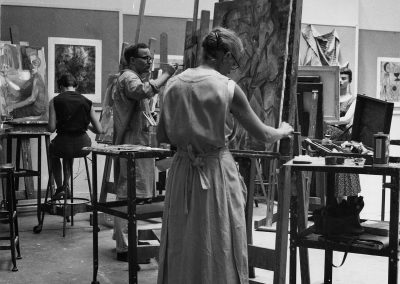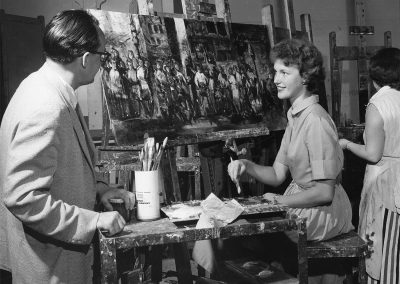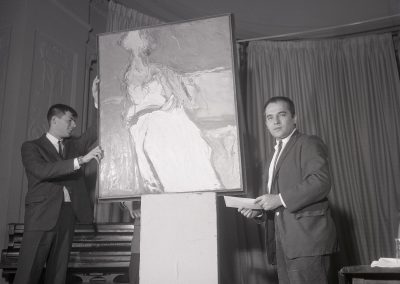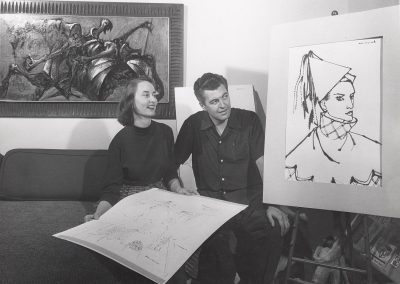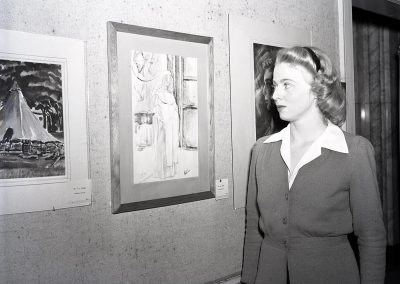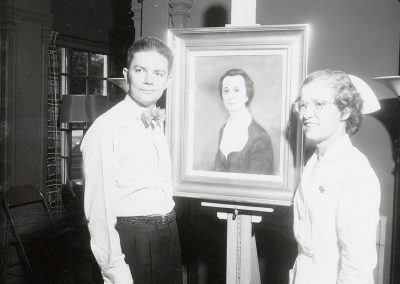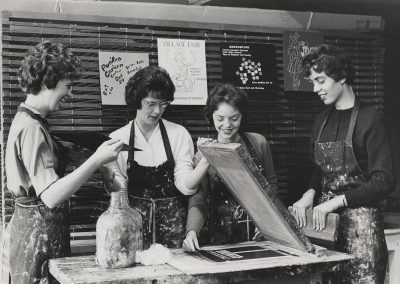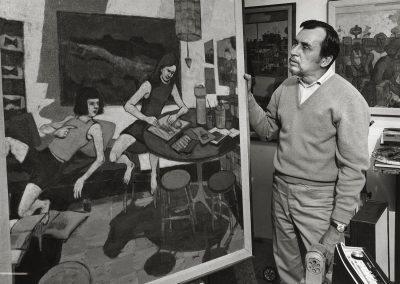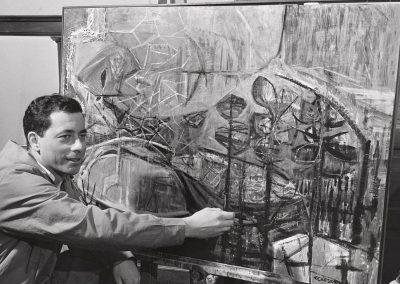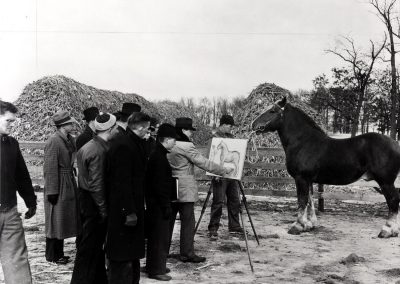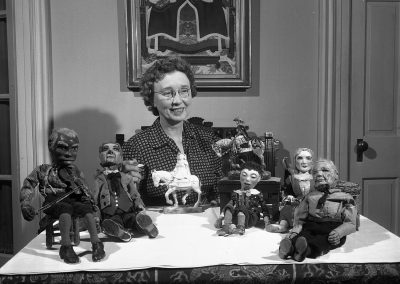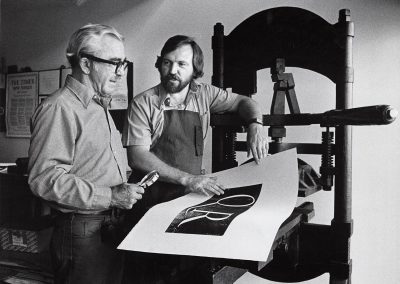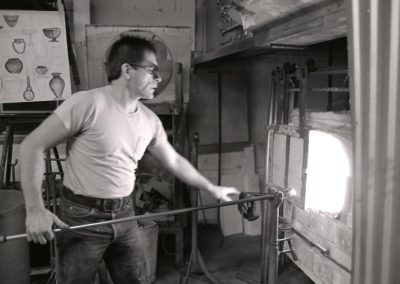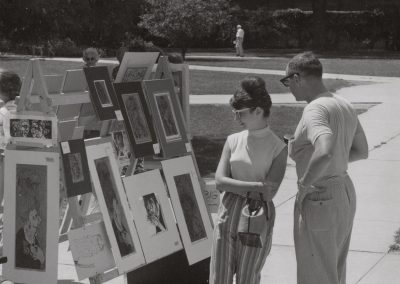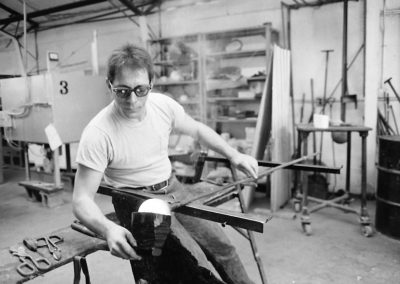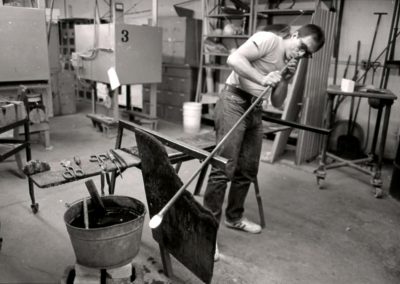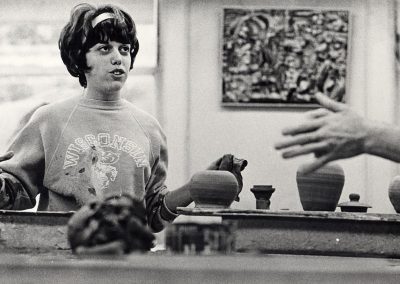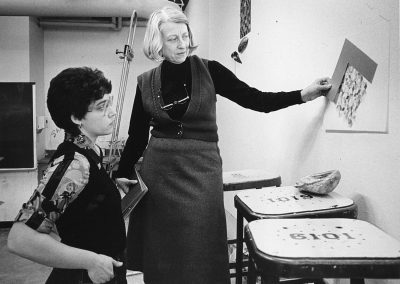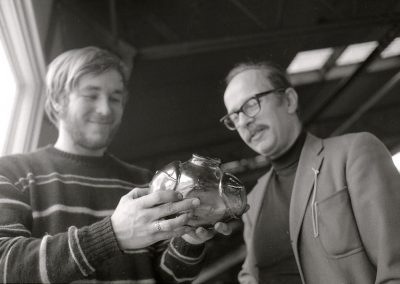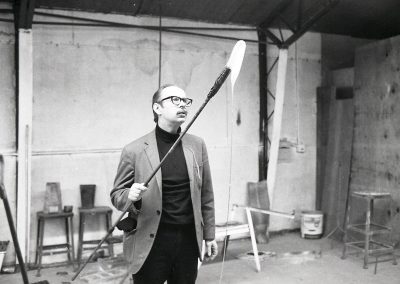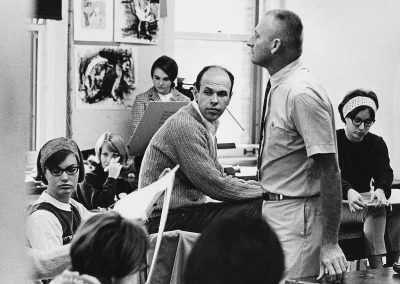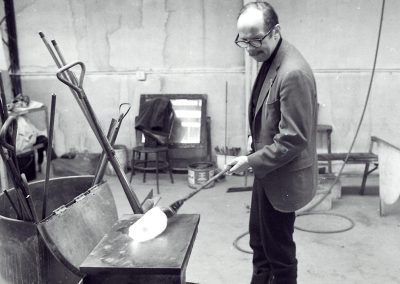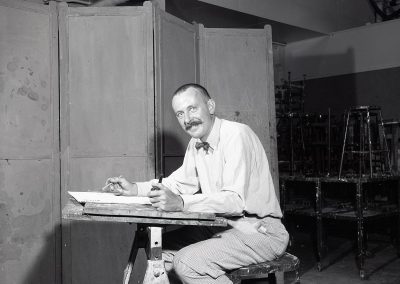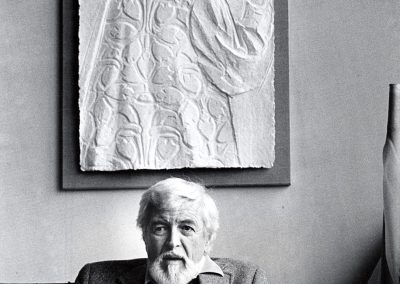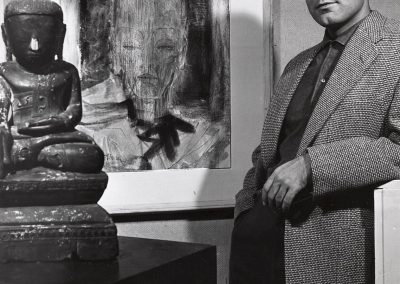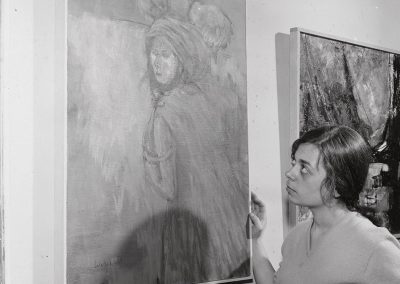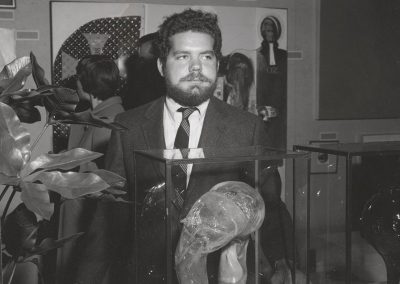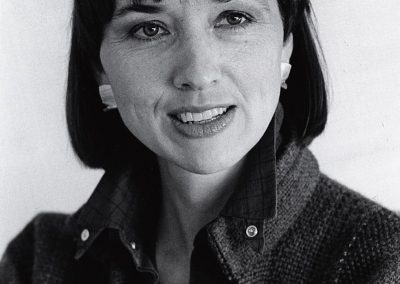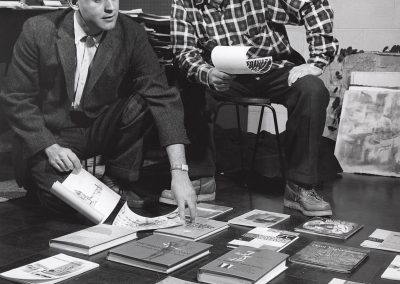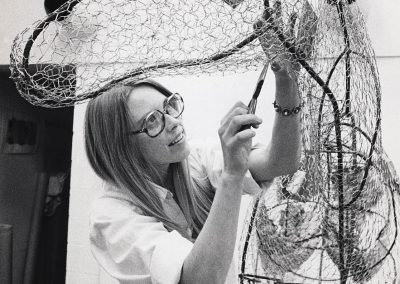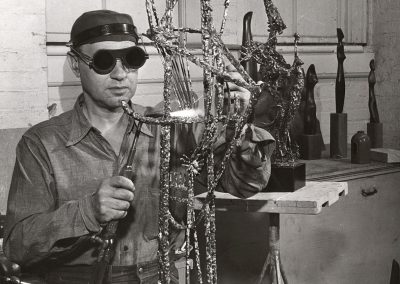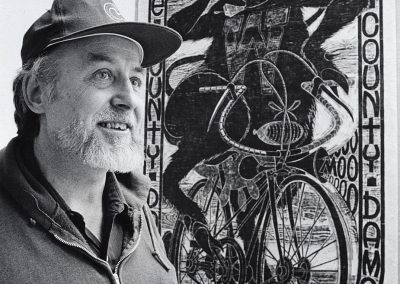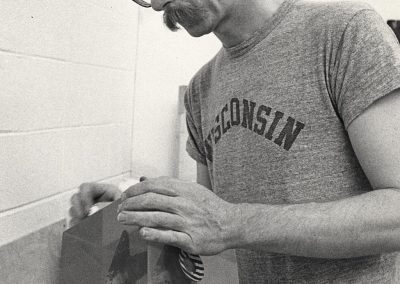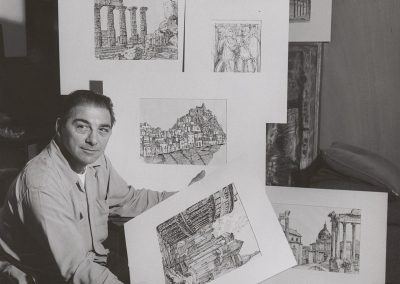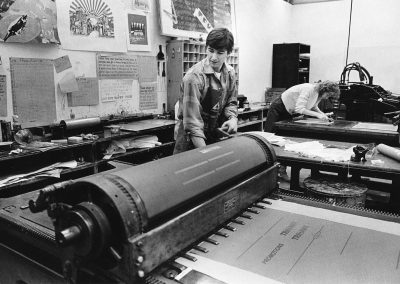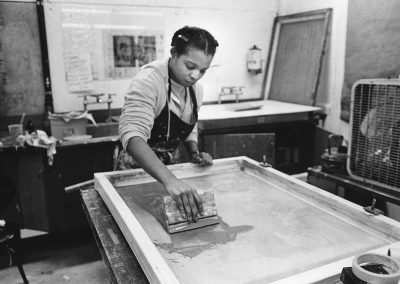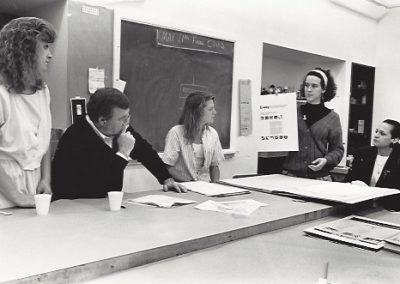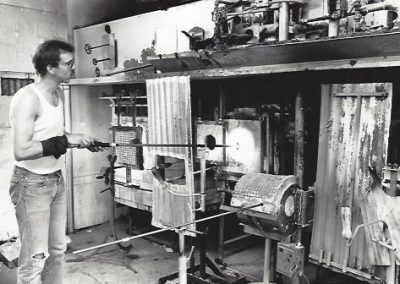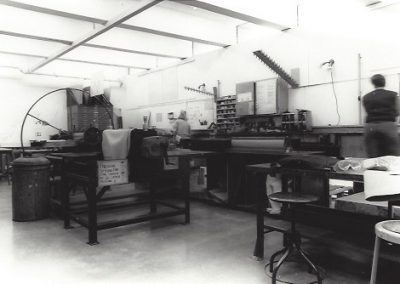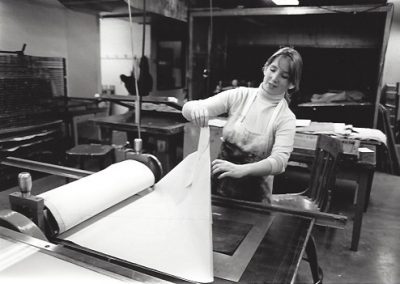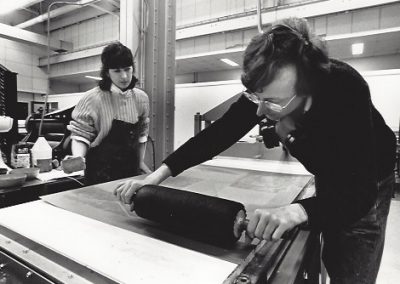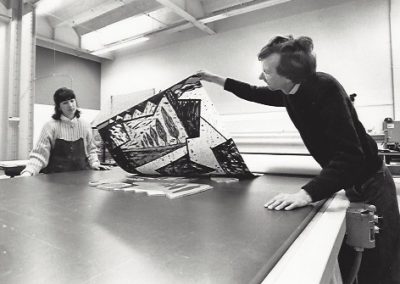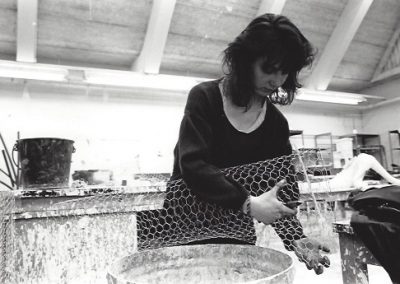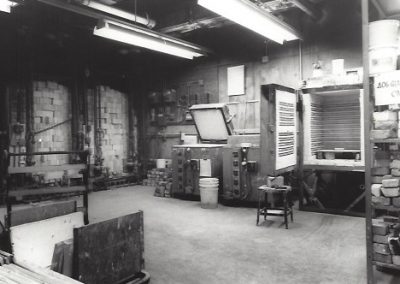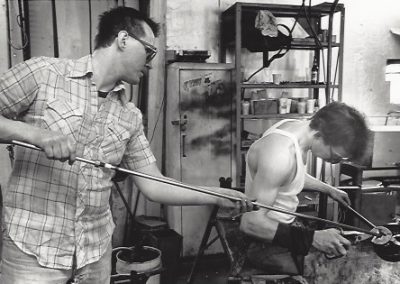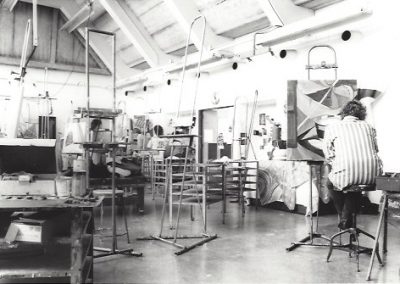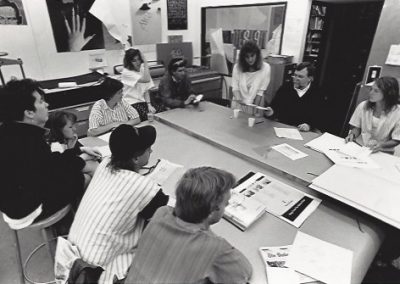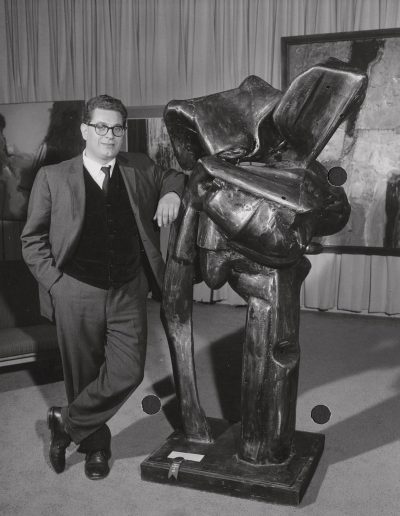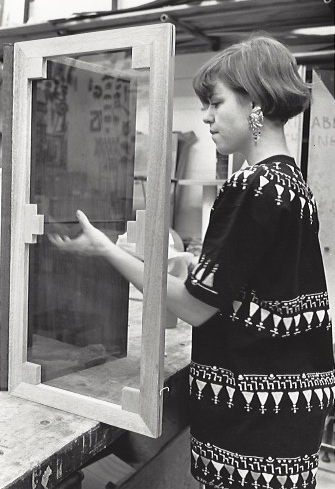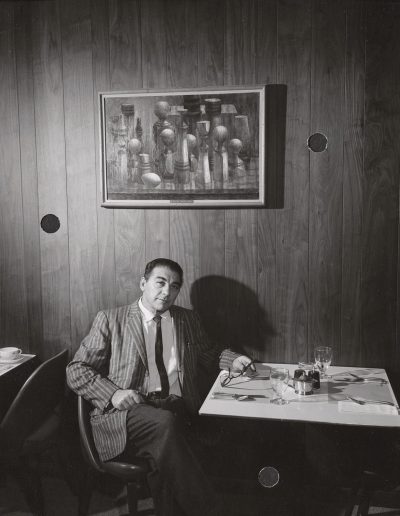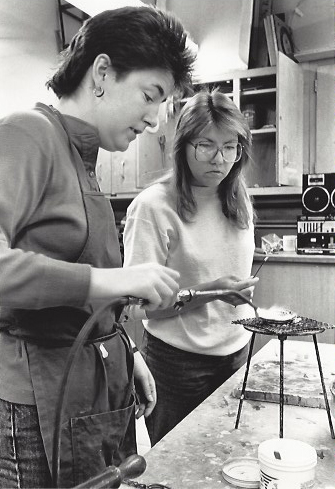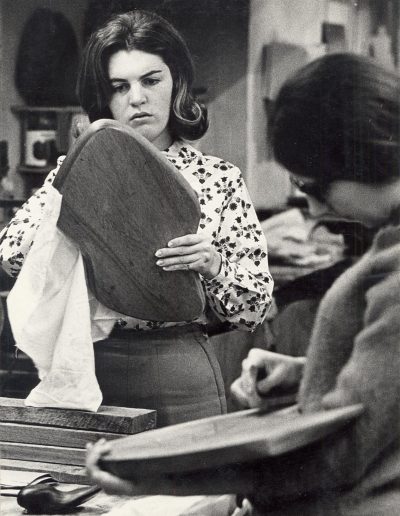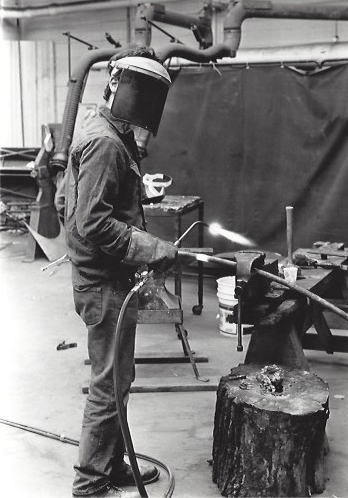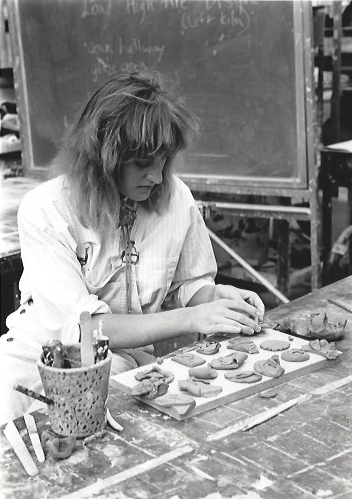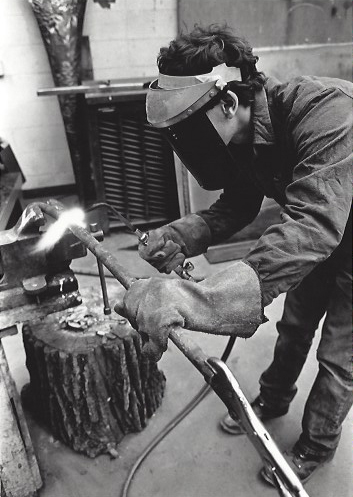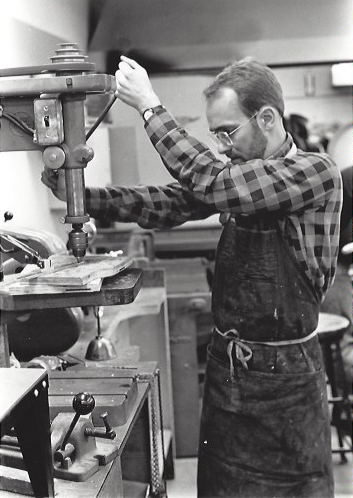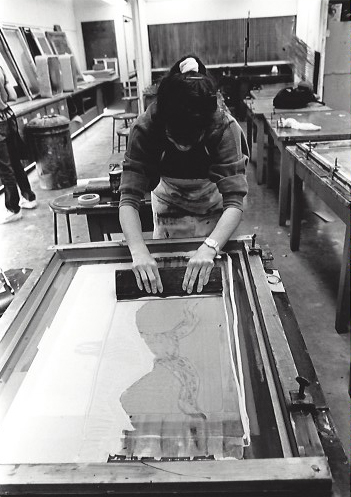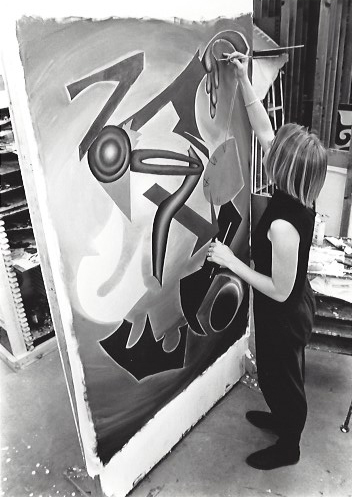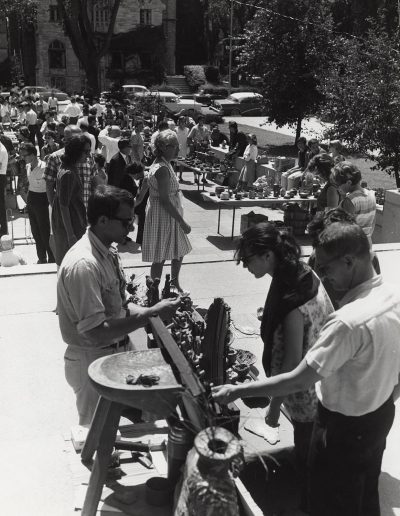The UW–Madison Art Department is a national leader in the cultivation and production of creative expression and the visual arts. Our undergraduate and graduate degree programs set the practical, critical-thinking and collaborative foundation for students to excel in any area of artistic focus: painting, printmaking, graphic design, sculpture, ceramics, metalsmithing, glass, furniture-making, papermaking, photography, digital media, video, performance and more.
For more than a century, we’ve set the standard for arts learning: we established the first glass-blowing lab in the country, our printmaking programs are consistently ranked the best in the country, and we’re home to internationally acclaimed faculty members and visiting artists. Many icons in the industry have been inspired in these very halls – from designer Iris Apfel, to glass sculptor Dale Chihuly, to performer Linda Montano.
Degree Offerings
B.S., B.F.A., M.A., & M.F.A. in Studio Art
B.S. in Art Education
Undergraduate Certificate in Art Studio or Graphic Design
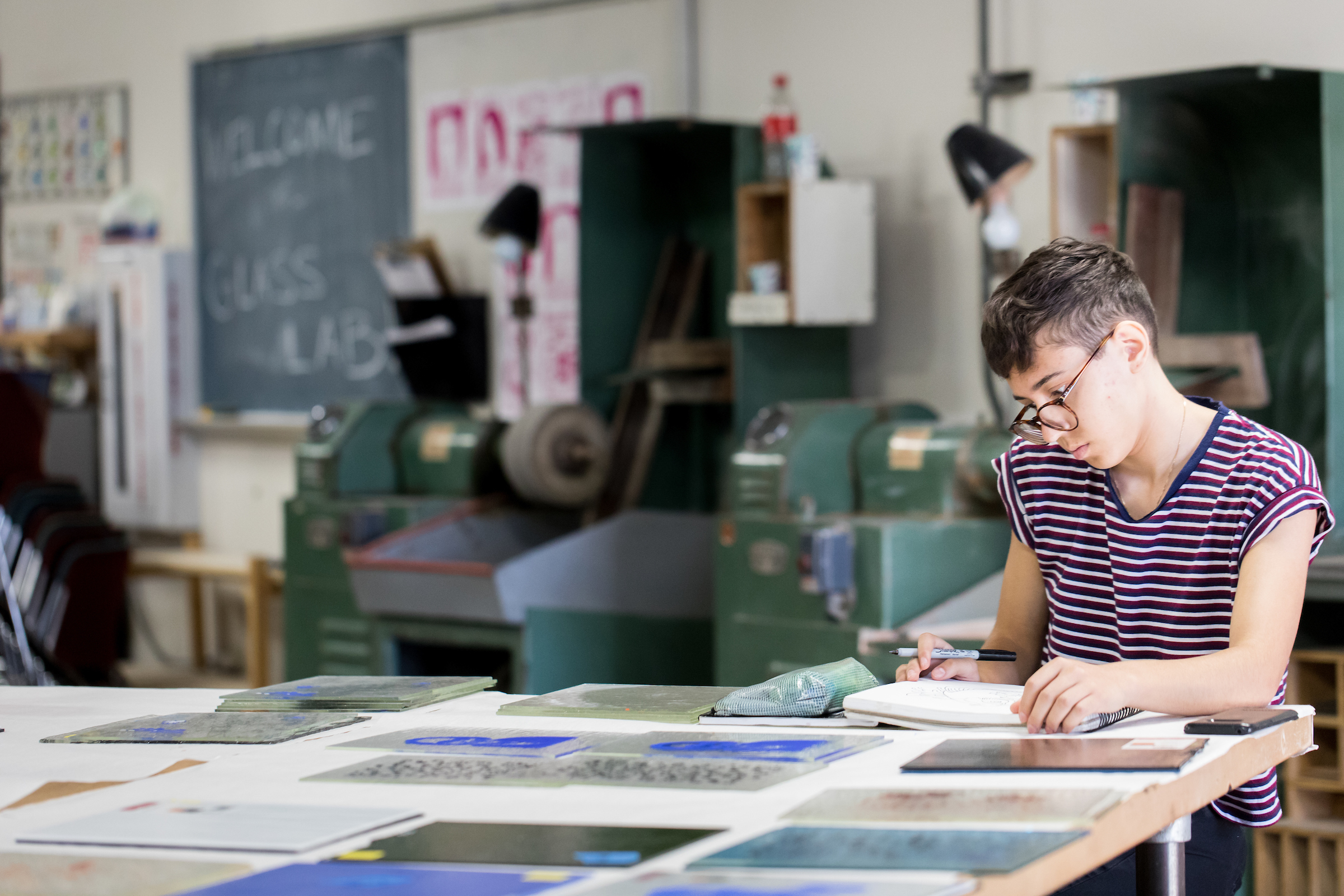
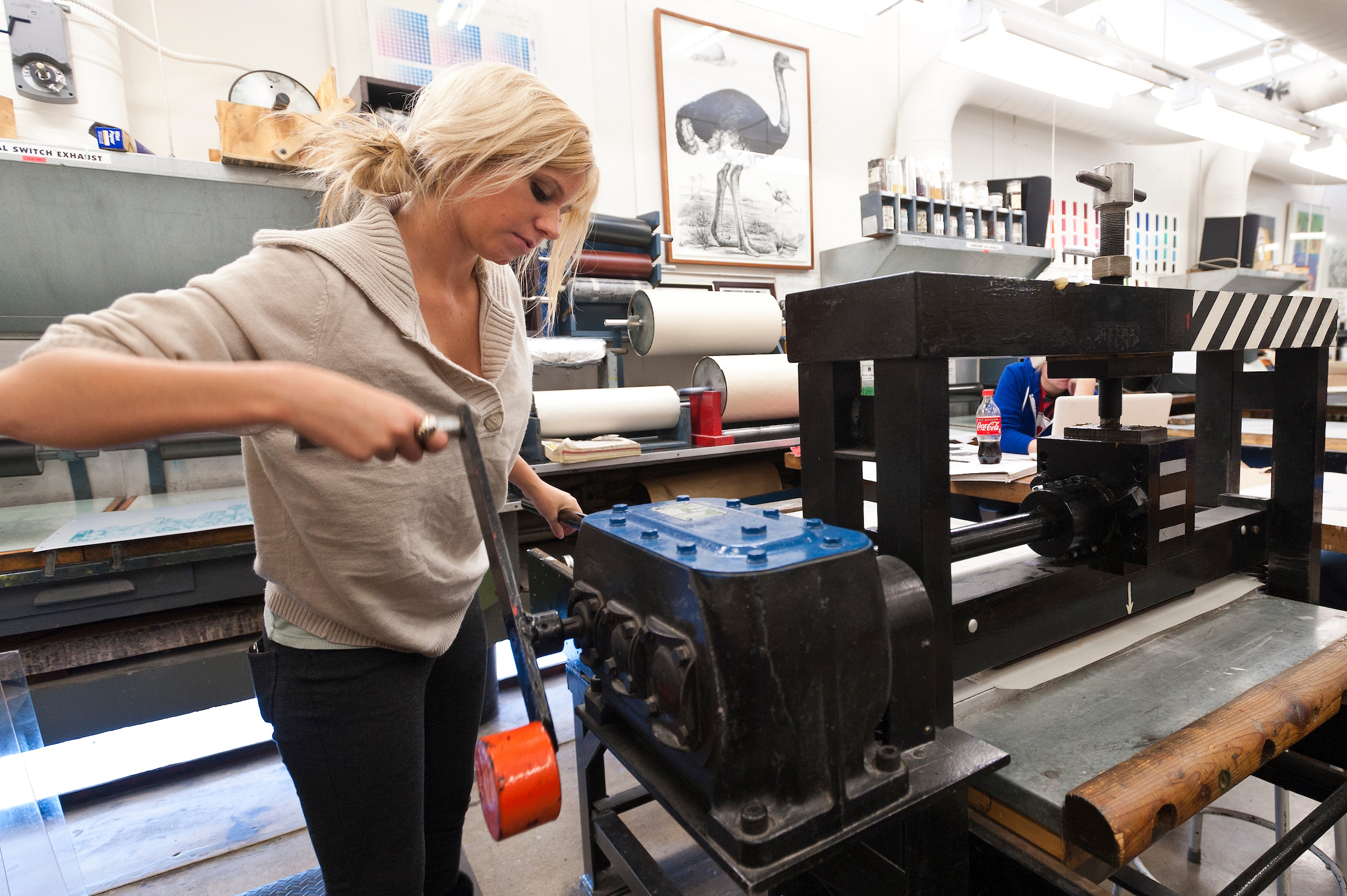
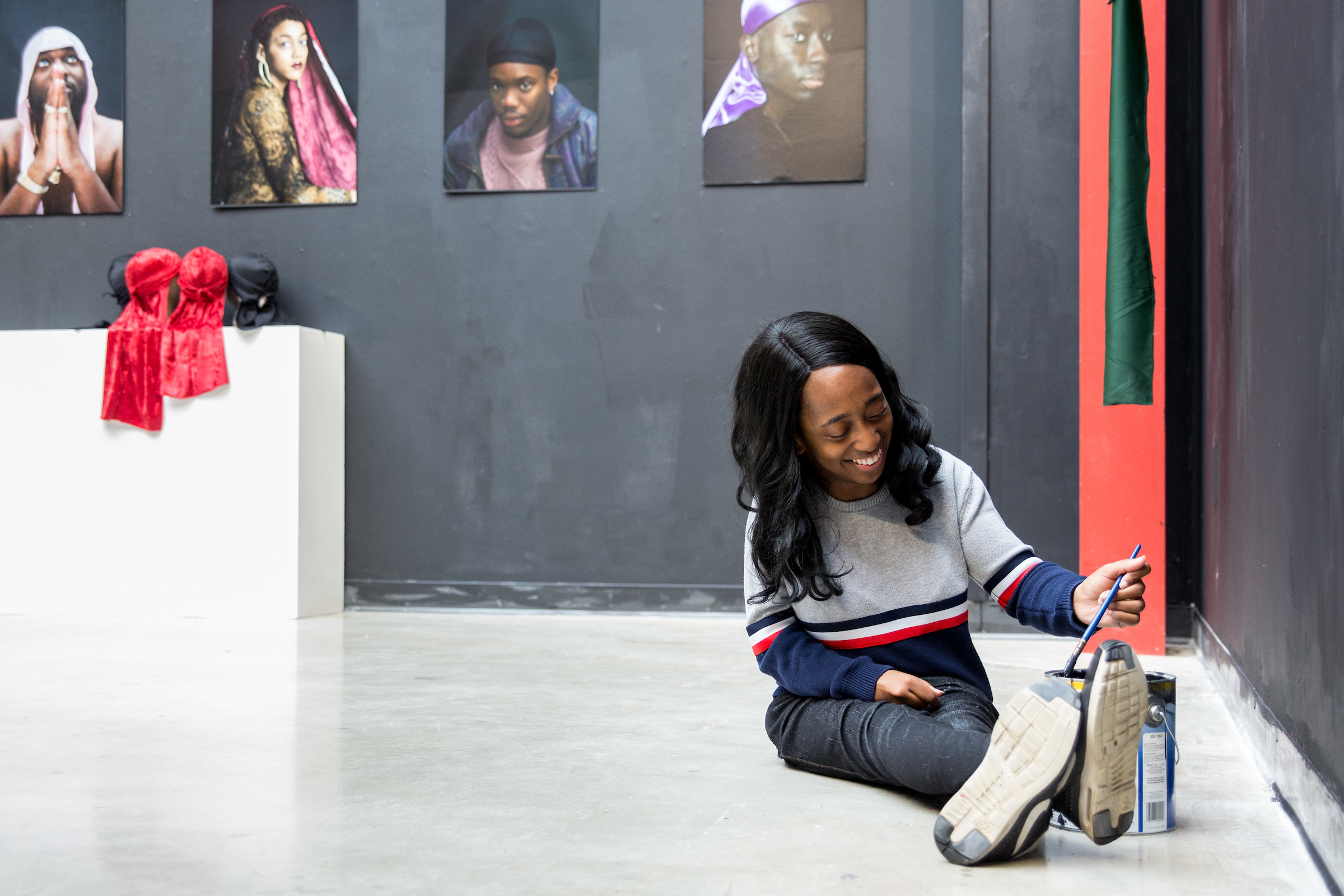
Mission Statement
We see Art and Design as a vital, fundamental force capable of conveying images and ideas across time and place with the power to address all human concerns.
As artists and designers, we recognize our place in a historic continuum of learning and teaching in which students play a critical role.
Our mission is to cultivate, strengthen, and pass this power directly to the students on whom the future of Art and Design depends.
We champion diversity, discipline, rigor and innovation and above all, freedom of expression. Our accomplished and diverse faculty work across creative disciplines to help students develop the creative, critical, and technical skills needed for life-long engagement in the visual arts.
Vision Statement
The mission of the Art Department at the University of Wisconsin-Madison is to educate students in studio art and design in order to form lasting contributions to knowledge and culture. Our mission mirrors the guiding principles of the university whose outreach efforts influence lives within the classroom, the state of Wisconsin, and beyond.
Seated within the School of Education, the Art Department curriculum allows students to join their academic and studio disciplines in order to source the full potential of the University. Research offerings at the University of Wisconsin are ranked among the highest in the world including our libraries, museums, laboratories, historic collections, faculty, staff, and visiting scholars. Student learning and curriculum is also supported on campus by the Chazen Museum of Art, Tandem Press, and the Division of the Arts. Our prominent and diverse faculty work across creative disciplines to teach hands on skills, critical thinking, observation, and innovation.
Art students are presented with an interdisciplinary, professional practice, and standards for scholarship in order to develop creativity, meaning, and social engagement in the visual arts. The mission of the Art Department values the diverse contributions, background, and experiences of each student who serves as a catalyst for the extraordinary within the contemporary practice of art at University of Wisconsin-Madison and the world.
DEPARTMENT HISTORY
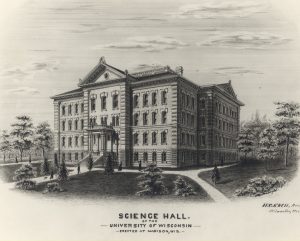
Opened in 1877 on the same spot where the current Science Hall now stands, the Old Science Hall included laboratories, lecture halls, department offices, and museum space. The building caught fire in 1884 and was completely gutted.
A combination of spirit and social dynamics has given the state of Wisconsin and the University their distinctive identity and character. Some of this is readily traceable to life on the frontier during the state’s formative years. Life was arduous and understandably simple. The circumstances did not encourage any immediate flowering of the visual arts. The early settlers regarded art as education—art as something to learn how to do or as a desirable enterprise for improving self-expression and evidencing qualities of gentility, especially among women. In spite of the more pragmatic concerns of frontier life, the University showed a comparatively early interest in fine art. When Science Hall, the university’s first major building constructed since the Civil War, opened in 1877, it contained an art museum. Unfortunately, the gallery and the collection were lost when the building caught fire and its contents were destroyed in 1884.
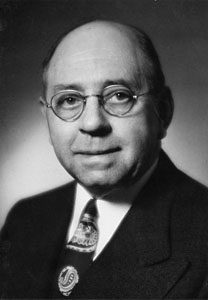
Portrait of William Varnum, Professor of Art from 1912 to 1946.
Although some courses in Latin touched on classical art and UW Extension offered art survey and art appreciation courses, the progenitor of today’s Art Department began in 1910 when the engineering department in the College of Letters and Science offered a “manual arts” program. The program was designed for students hoping to secure positions as directors and supervisors of manual arts and vocational work in public school systems. The University’s manual arts curriculum included subjects with an industrial orientation such as mechanical drawing, woodworking, and metal craft. Additional courses embraced the more traditional freehand drawing and perspective, watercolor rendering, and pottery. By the mid-1920s, the program had expanded into a department of industrial education and applied arts. The vocational aspects of art training were the primary emphasis, but courses also were offered in drawing, painting, design, arts-crafts, and primary arts for teachers. After 1930, when the newly-established School of Education separated from its original home in the College of Letters and Science, it included a department of art education. William Varnum, a design educator and member of the art faculty for more than twenty years, served as chair of the department.
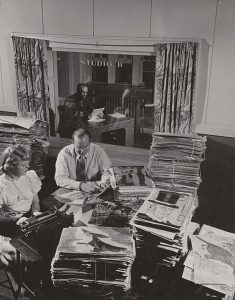
Professor James Schwalbach looks at drawings from the WHA Radio program “Let’s Draw.”
As the department continued to evolve, its prior emphasis on vocational topics gave way to a program designed to familiarize the student with basic and advanced art practice, leading to the development of teachers and supervisors of art (drawing, painting, design, commercial and professional art, and the art crafts) in public and private schools, teachers colleges and universities. However, the curriculum did include an additional accommodation for students not majoring in art education but who were interested in appreciative or professional knowledge of art theory and practice through studio participation. By the end of the 1930s, the department began to offer a baccalaureate degree in applied art. The major emphasis of the art department through the 1930s and into the early 1940s continued to be in art education—training teachers to staff the high school programs around the state. A generation of Wisconsin schoolchildren took their art lessons by listening to the radio, specifically Professor James Schwalbach’s “Let’s Draw” program.
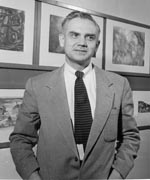
Professor Fred Logan
Change does not usually happen rapidly in an academic setting, but for Fred Logan, a relatively new member of the art education faculty, the world turned topsy-turvy as far as education was concerned in 1946. Veterans returning from service in World War II, were eager to pursue their education through grants provided by the G.I. Bill. University enrollment swelled in all areas of the campus. The surge placed unprecedented demands on the University’s physical and human resources. Art was no exception. Those students who came to study were more mature and demanding than those of previous generations. They were in a hurry to finish their education and get on with their lives.

Professor Alfred Sessler (center) and Professor Robert Grilley of the Art Education Department with works for the 2nd Annual Summer Session Art Exhibition at the Memorial Union.
Actually, a sense of change had been building in the department. New faculty appointments indicated a trend which grew and eventually matured in the postwar years. Alfred Sessler, a graduate student who had worked on federally sponsored Public Work for Arts Programs during the depression, received an appointment as an instructor in the department on completion of his degree. Similarly, Arthur Vierthaler, who had considerable experience working with art metal but had no formal training in art education took over the courses of William Varnum, following his passing in the summer of 1946. Shortly thereafter, Dean Meeker, a graduate of the Art Institute of Chicago, arrived to teach courses in drawing and painting. These appointments were followed by a wave of new faces, including Santos Zingale, John Wilde, Warrington Colescott, Donald Anderson, and Gibson Byrd. The presence of women on the art education faculty, begun earlier with the appointments of Della Wilson and Helen Annen, continued with Marjorie Kreilick.
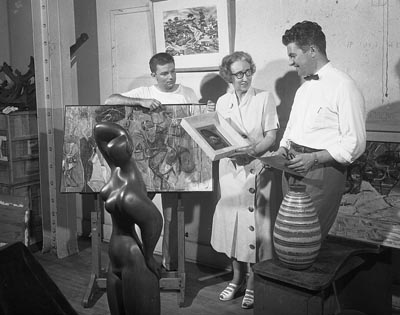
Robert Grilley, Helen Annen, and Dean Meeker in 1952
The balance within the department began to shift from art education to applied art. The new faculty came with established records as emerging artists but offered marginal credentials in traditional academic subjects. The new faculty selected to staff the postwar program were predominantly de facto artists-in-residence, people who brought with them a restless energy, creativity, and innovation. (Dean Meeker, for example, offered the first college course in serigraphy.)
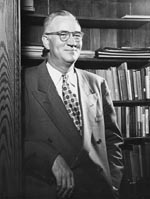
Dean John Guy Fowlkes
Greater student demand for studio-oriented courses meant increased enrollments for the school. Building a highly visible, quality program translated into increased prestige. School of Education Dean John Guy Fowlkes made sure the administrative environment was right to capitalize on the momentum. Fred Logan helped establish the basis for a relatively smooth transition of emphasis from teaching teachers to cultivating the talents of potential studio artists. Although primarily an art educator, Logan recognized that the future of art at Wisconsin—and in the profession—would be in studio programs. The 1950s brought a broad and substantial expansion of the program. At the middle of the decade, the department conducted a self-assessment showing that from 1945 to 1955, the Department more than tripled its capacity to deal with the enormously increased demands both from regular art majors and others requiring special art courses in their curriculum.

Students sit on the steps of the Education building.
A substantial remodeling of space in the Education Building to accommodate the growing program proved to be a major boost for the department during the 1950s. The remodeling produced an exhibition gallery on the main floor, a new ceramics workshop, a model art classroom for teacher training, more spacious drawing and design rooms, space for sculpture activities, enlarged art metal quarters, and expanded space and equipment for photography, lithography, serigraphy, and general crafts. A further enhancement of the academic program came in 1957 with the approval of a Master of Fine Arts degree. Just over two decades later, in 1978, a similar program, the Bachelor of Fine Arts, was introduced to provide undergraduates better professional preparation in the studio areas of the visual arts than is possible in the existing B.S. program.

A Wisconsin Alumnus Magazine article about Harvey Littleton, a “trail-blazing glass-blower.”
By the beginning of the 1960s, the present-day configuration of the art department program had been firmly established. The initial generation of faculty who had established the studio art program was augmented by the appointments of Raymond Gloeckler in art education and relief printing, Jack Damer in lithography, and Walter Hamady, Phil Hamilton, William Weege, and Cavalierre Ketchum in graphic arts and photography. Harvey Littleton, who served as department chair on two separate occasions in the 1960s and early 1970s, had come to teach ceramics but soon established the first studio program in art glass in the United States. This development had a significant impact as the graduates of the Wisconsin program fanned out across the country to teach and to create their own works. Similarly, Don Reitz gave new impetus to the ceramics program, while Hamady stimulated developments in the book arts and papermaking.
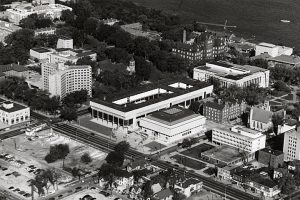
An aerial view of the completed George L. Mosse Humanities Building in 1970.
These developments were tempered by more practical concerns, however. By the end of the 1950s, the increased growth of the program was obvious and plans were laid to seek larger quarters and better equipment. In 1962, building committees were established in the department of art and art education, the history department, and the School of Music to prepare plans for what is now the Humanities Building. Humanities, designed by Chicago architect Harry Weese in the Brutalist style, opened in 1969. It provided the department with administrative offices, studios, classrooms, and a small gallery. For the first time, there was enough space to offer each of the major components of the program—art education, two-dimensional studio art, three-dimensional studio art, and the graphic arts—their own separate areas. New equipment made it possible to offer instruction in state-of-the-art developments in the various media.
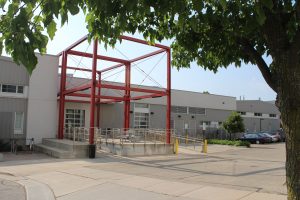
A structure of red steel beams and cables form a decorative entry to the exterior of the Art Lofts building at the University of Wisconsin-Madison. The state-of-the-art facility houses teaching spaces for several fine art disciplines as well as private studio spaces for faculty and graduate students.
The program grew and adapted to changing times. The current curriculum, for example, embraces such relatively recent expansions of the concept of making art to include computer art, video, and cross-listed courses dealing with lighting, set design, and sound design as well as courses which deal with such topics as the social functions of art. A major addition to the Art Department came in 1987 with the establishment of Tandem Press, founded by faculty member Bill Weege. Built on a long tradition of excellence in printmaking at the university, Tandem Press produces prints by nationally recognized visiting artists and offers students opportunities to learn about the artistic and economic factors that go into the operation of a major print studio.

In 2003 during Arts Night Out, visitors to the 7th Floor Gallery in the Mosse Humanities Building admire a sculpture by art graduate student Chris Walla. The untitled eight-foot tall sculpture, made of steel, wood and linoleum, was part of an exhibit of Walla’s work entitled Domestica.
In the early 21st century, the department acquired a foothold in a warehouse next to the Kohl Center for new ceramics, glass, neon, and papermaking facilities, a bronze foundry, darkroom and digital labs, a woodshop, graduate and faculty studios, a large performance space, as well as a second gallery space. Renovations were completed in 2009 and the Art Lofts opened for use, increasing the department’s options for programming, art production, exhibitions, and education in the arts across a total of 160,000 square feet of dedicated space.
From a standpoint of public perception, perhaps the most tangible testament of the department’s ongoing creative activities can be found in the multitude of weekly student exhibitions which appear in the 7th floor gallery of the Humanities Building and the Art Lofts gallery each year, and in the Art Department Quadrennial Faculty Exhibition, an event which has become a cotillion sampling recent work by current and emeritus faculty. The first comprehensive faculty exhibition was organized and presented in 1974 as joint venture of the Art Department and the Elvehjem Museum of Art (then known as the Elvehjem Art Center, now the Chazen Museum of Art) to help celebrate the university’s 125th anniversary.
In many ways, the shows represent a periodic revisiting of the frontier. It is not so much a consideration of the frontier as a landscape boundary, but more an exploration of artistic potential. That continuing exploration has become the primary mission of the Art Department.
-Adapted from “Exploring Artistic Potential: An Informal History of the UW-Madison Art Department” by Arthur Hove, special assistant emeritus at the University of Wisconsin–Madison.

